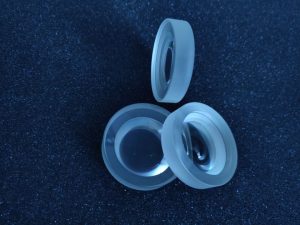A biconcave lens is composed of two inward curved surfaces and has a negative focal length. It is often used to increase the focal length and light divergence. It can be used in laser beam expander, optical character reader, tolerance device and projection system. We can make ingredients, processing and coating according to your size requirements. Please contact our sales team for details.
·Processing materials include colorless optical glass, laser crystal, fused quartz, anti-radiation glass, ultraviolet and infrared materials, and metal materials
·With positive focus
·Can become a real image, can become a virtual image
Hanzhong Borisun Optics can provide biconcave lenses of various materials, including BK7, fused quartz, CaF2, etc., and can customize the required size according to requirements. We also provide a variety of standard size products, and can plating different wavelengths of antireflective film according to the use situation.
Material selection: BK7 material, applicable to visible near-infrared band, low price and stable performance. Fused quartz material, suitable for deep ultraviolet to near-infrared wave band, with low thermal expansion coefficient, can be used in ultraviolet or high-power applications.
Coating selection: the single-sided reflectivity of the material before coating is generally about 4%, and the single-sided reflectivity after coating is about 0.25%.
The line connecting the curvature centers of the two sides of a biconcave lens is called the principal axis, and the point O of its center is called the optical center. The light passing through the optical center is not refracted no matter where it comes from. The beam of light parallel to the main axis, which refracts on the concave lens and then diverges to the four directions, and the extension line against its diverging direction, will be at one point F on the same side of the light source, and its refracted light will just be emitted from point F, which is called the virtual focus. There is one on each side of the lens. A biconcave lens is also called a divergent lens. The focal length of a concave lens refers to the distance from the focus to the center of the lens. The larger the radius of the lens, the longer the focal length. If it is a thin lens, the focal length of both sides is equal.
When used in optical sparse media, it can diverge the incident beam, so it is also called divergent lens. It is also called negative lens because its focal length is negative. For thin concave lenses, the imaging formula, lateral magnification formula and sign rule are the same as those for convex lenses.
The image formed by the biconcave lens is always smaller than the vertical virtual image of the object. The biconcave lens is mainly used to correct myopia. Myopia is mainly due to the deformation of the lens, resulting in the premature concentration of light in front of the retina. The biconcave lens plays the role of diverging light. The biconcave lens forms an upright and reduced virtual image, which makes the image distance longer and just falls on the retina.
The biconcave (biconcave) has a negative focal length and divergent collimated light. The DCV lens only forms the virtual image seen through the lens. They reduce spherical aberration, coma and distortion under unit conjugate ratio.
The lens is symmetrical, with equal radius on both sides. The biconcave lens is usually used to expand the beam or increase the focal length in the optical system, and is usually used in combination with other lenses. Many devices using biconcave lenses include laser beam expanders, optical character readers, viewers and projection systems. These lenses have a variety of antireflective coatings.




